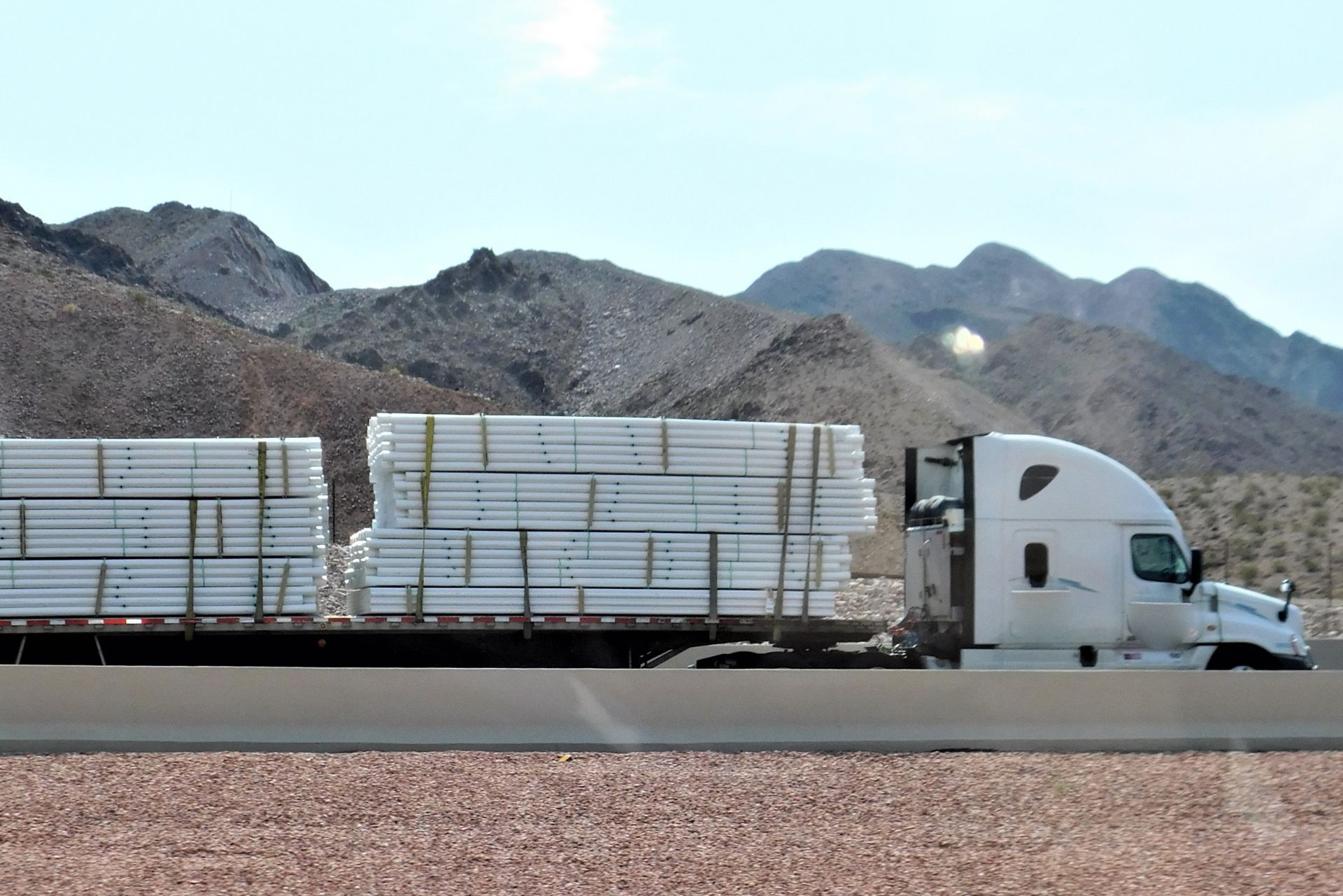Top 3 Recommended Policies

In the world of freight shipping, understanding the nuances of insurance can be a daunting task. Less Than Truckload (LTL) shipping has gained popularity due to its cost-effectiveness and efficiency for businesses that do not have enough freight to fill an entire truck. However, with this convenience comes the need for adequate insurance coverage. This article aims to break down everything you need to know about LTL insurance, ensuring that you are well-informed when it comes to protecting your shipments.
What is Less Than Truckload (LTL) Shipping?
LTL shipping refers to the transportation of relatively small freight loads that do not require a full truck. This method of shipping allows multiple shippers to share space on a single truck, which can significantly reduce costs. It is ideal for businesses that have shipments that weigh between 150 and 15,000 pounds.
One of the key benefits of LTL shipping is its flexibility. Shippers can send smaller amounts of goods without committing to a full truckload, thus optimizing their logistics and reducing waste. However, this also means that the freight is more vulnerable during transit, making insurance a critical consideration.
The Cost-Effectiveness of LTL Shipping
Utilizing LTL shipping can lead to substantial savings for businesses. Instead of paying for an entire truck, shippers only pay for the space their goods occupy. This method is particularly beneficial for small to medium-sized enterprises that may not have the volume to justify a full truckload.
Moreover, LTL carriers often have established networks that can provide faster delivery times compared to traditional freight methods, making it a practical choice for time-sensitive shipments. However, the savings can be negated if adequate insurance is not in place, leading to potential losses in the event of damage or theft.
In addition to cost savings, LTL shipping can also enhance a company’s operational efficiency. By allowing businesses to ship smaller quantities more frequently, companies can better manage their inventory levels, reducing the need for large storage spaces and minimizing the risk of overstocking. This agility in shipping can be particularly advantageous in industries that experience fluctuating demand or seasonal variations, as it allows businesses to respond quickly to market changes without incurring excessive shipping costs.
Furthermore, LTL shipping can contribute to sustainability efforts. By consolidating shipments from multiple shippers, LTL carriers can optimize truckloads and reduce the number of trips needed, which in turn lowers carbon emissions associated with freight transport. Many LTL providers are increasingly adopting eco-friendly practices, such as using fuel-efficient vehicles and implementing route optimization software, to further enhance their environmental impact. This makes LTL not only a cost-effective option but also a more responsible choice for businesses looking to reduce their carbon footprint.
Understanding LTL Insurance
LTL insurance is designed to protect shippers from financial losses that may occur during the transportation of goods. This type of insurance covers various risks, including damage, theft, and loss during transit. It is crucial for businesses to understand the different types of coverage available to ensure they select the right policy for their needs.
Types of LTL Insurance Coverage
There are generally three types of insurance coverage available for LTL shipments: carrier liability, freight insurance, and declared value coverage. Each type offers different levels of protection and has its own set of advantages and disadvantages.
Carrier Liability
Carrier liability is the basic level of coverage provided by the freight carrier. It typically covers loss or damage to goods up to a certain limit, which is often based on the weight of the shipment. While this may seem sufficient, it is important to note that carrier liability often does not cover the full value of the goods, especially for high-value items. Furthermore, the terms and conditions surrounding carrier liability can vary significantly between different carriers, making it essential for shippers to read the fine print and understand the specific limitations and exclusions that may apply.
Freight Insurance
Freight insurance, on the other hand, is a separate policy that can be purchased to provide additional coverage beyond what the carrier offers. This type of insurance can cover the full value of the goods, offering peace of mind to shippers. It is particularly recommended for businesses that frequently ship high-value items or fragile goods. Additionally, freight insurance can often be customized to fit the unique needs of a shipper, allowing for tailored coverage options that address specific risks associated with their products or shipping methods. Many freight insurance providers also offer streamlined claims processes, which can significantly reduce the time and effort required to recover losses in the event of an incident.
Declared Value Coverage
Declared value coverage allows shippers to declare the value of their shipment when booking the freight. This value is then used to determine the carrier's liability in the event of loss or damage. While this option can provide some additional protection, it is important to understand that it may come with added costs and limitations. For instance, some carriers may charge a higher rate based on the declared value, which can impact overall shipping costs. Additionally, shippers should be aware that declaring a value does not guarantee full reimbursement in the event of a claim, as the carrier's liability may still be limited by their policy terms. Therefore, it is advisable for shippers to conduct a thorough risk assessment of their shipments and consider their options carefully to ensure adequate protection is in place.

Why is LTL Insurance Important?
Investing in LTL insurance is essential for several reasons. First and foremost, it protects businesses from unexpected financial losses that can arise from damaged or lost shipments. The cost of replacing goods can quickly add up, especially for small businesses operating on tight margins. Without proper coverage, a single incident could jeopardize a company's financial stability, making it crucial to have a safety net in place.
Furthermore, having adequate insurance coverage can enhance a business's reputation. Customers are more likely to trust a company that takes the necessary steps to protect their shipments. This trust can lead to repeat business and positive word-of-mouth referrals, which are invaluable for growth. In an increasingly competitive market, demonstrating a commitment to safeguarding customer interests can set a business apart from its competitors, fostering loyalty and encouraging long-term relationships.
Legal Requirements and Compliance
In many jurisdictions, businesses are legally required to have some form of insurance when shipping goods. Compliance with these regulations is not only crucial for avoiding legal penalties but also for ensuring that shipments are handled responsibly. Shippers should familiarize themselves with local laws and regulations regarding freight insurance to ensure they remain compliant. This knowledge can also provide businesses with a competitive edge, as they can confidently assure clients that they adhere to industry standards and legal requirements.
Moreover, understanding the nuances of LTL insurance can help businesses tailor their coverage to better suit their specific needs. For instance, some policies may offer additional benefits such as coverage for delays or liability for third-party claims. By taking the time to explore these options, businesses can create a comprehensive insurance strategy that not only meets legal obligations but also addresses the unique challenges they face in their logistics operations. This proactive approach can significantly reduce risks and enhance operational efficiency, ultimately contributing to a more resilient business model.
Factors to Consider When Choosing LTL Insurance
Selecting the right LTL insurance policy requires careful consideration of several factors. Each business has unique shipping needs, and understanding these needs can help in choosing the most suitable coverage.
Value of Goods
One of the primary considerations should be the value of the goods being shipped. High-value items may require more comprehensive coverage, while lower-value shipments might be adequately protected under basic carrier liability. Assessing the value of goods can help in determining the appropriate level of insurance needed. Additionally, it is crucial to consider the nature of the goods. Fragile items, perishables, or specialized equipment may necessitate specific types of coverage that address the unique risks associated with those products. For instance, shipping electronics may require insurance that covers damage from static electricity or mishandling, while perishable goods might need coverage that accounts for temperature fluctuations during transit.
Frequency of Shipments
The frequency of shipments is another important factor. Businesses that ship regularly may benefit from a freight insurance policy that offers consistent coverage across multiple shipments. This can often lead to cost savings compared to purchasing insurance for individual shipments. Moreover, companies should evaluate their shipping patterns and peak seasons. During high-demand periods, such as holidays or promotional events, the volume and urgency of shipments can increase significantly. In such cases, having a robust insurance policy that can accommodate fluctuations in shipping frequency and volume can provide peace of mind and financial protection against unforeseen incidents.
Types of Coverage
Understanding the different types of coverage available is also essential when selecting LTL insurance. There are various options, such as all-risk coverage, which protects against a wide range of potential losses, and named perils coverage, which only covers specific risks listed in the policy. Businesses must assess their risk tolerance and the specific threats they face during transit. For example, if a company frequently ships goods through areas prone to theft or natural disasters, opting for a more comprehensive all-risk policy may be prudent. Additionally, some insurers offer customizable policies that allow businesses to tailor their coverage to fit their unique shipping needs, ensuring that they are not overpaying for unnecessary coverage while still adequately protecting their assets.

Common Misconceptions About LTL Insurance
Despite its importance, there are several misconceptions surrounding LTL insurance that can lead to confusion among shippers. Addressing these misconceptions can help businesses make informed decisions regarding their shipping insurance needs.
“Carrier Liability is Enough”
One common misconception is that carrier liability is sufficient for all shipments. While it provides a basic level of coverage, it often does not cover the full value of the goods, especially for high-value items. Businesses should carefully evaluate their shipping needs and consider additional coverage options. For instance, if a company is shipping electronics or fragile items, the risk of damage or loss is significantly higher, making it crucial to invest in comprehensive insurance that can cover potential losses. Furthermore, understanding the specific terms of carrier liability can help shippers avoid unpleasant surprises when a claim is filed.
“Insurance is Too Expensive”
Another misconception is that freight insurance is prohibitively expensive. In reality, the cost of insurance can vary widely based on several factors, including the type of goods being shipped and the level of coverage required. Many businesses find that the cost of insurance is a small price to pay compared to the potential losses they could face without it. Additionally, some insurance providers offer flexible payment plans or discounts for businesses that ship regularly, which can make coverage more affordable. It's also worth noting that the peace of mind that comes with knowing your goods are protected can be invaluable, allowing businesses to focus on their core operations without the constant worry of potential shipping mishaps.
How to File a Claim for LTL Insurance
In the unfortunate event that a shipment is damaged or lost, knowing how to file a claim is essential. The claims process can vary depending on the insurance provider, but there are general steps that shippers should follow to ensure a smooth experience.
Document the Damage
The first step in filing a claim is to document the damage thoroughly. This includes taking photographs of the damaged goods, noting the condition of the packaging, and keeping any relevant shipping documents. Proper documentation is crucial for supporting the claim and ensuring that it is processed efficiently.
Notify the Insurance Provider
Once the damage has been documented, the next step is to notify the insurance provider. Most policies have specific timeframes within which claims must be filed, so it is important to act quickly. Providing all necessary documentation and details about the shipment will help facilitate the claims process.
Follow Up on the Claim
After submitting the claim, it is advisable to follow up with the insurance provider to check on its status. Claims can sometimes take time to process, and staying informed can help ensure that any issues are addressed promptly. Patience and persistence are key during this stage.
Best Practices for LTL Shipping and Insurance
To minimize risks and ensure smooth shipping operations, businesses should adopt best practices when it comes to LTL shipping and insurance. These practices can help protect shipments and enhance overall efficiency.
Proper Packaging
One of the most effective ways to protect shipments is through proper packaging. Ensuring that goods are securely packaged can significantly reduce the risk of damage during transit. Using high-quality materials and following industry standards for packaging can help safeguard shipments.
Choose the Right Carrier
Selecting a reputable LTL carrier is crucial for ensuring safe and timely deliveries. Researching carriers, reading reviews, and asking for recommendations can help businesses find a reliable partner. A good carrier will also have a solid insurance policy in place, providing an additional layer of protection.
Review Insurance Policies Regularly
As businesses grow and evolve, their shipping needs may change. Regularly reviewing insurance policies ensures that coverage remains adequate and relevant. This proactive approach can help businesses avoid gaps in coverage and ensure they are adequately protected against potential risks.
Conclusion
Understanding Less Than Truckload (LTL) insurance is essential for businesses that rely on this shipping method. By recognizing the different types of coverage available, the importance of insurance, and best practices for shipping, businesses can protect their assets and ensure smooth operations. Investing in the right insurance policy not only safeguards shipments but also enhances customer trust and satisfaction.
In a competitive market, being informed about LTL insurance can provide businesses with a significant advantage. With the right coverage in place, shippers can focus on growth and efficiency, knowing that their goods are protected during transit.
Contact Us

